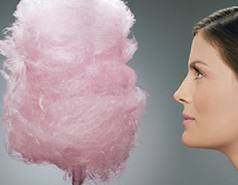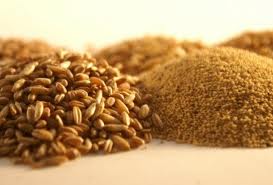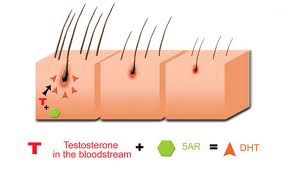Why does lead appear in lipstick in the first place?
|

We'd love to hear from you! What are your thoughts on Lead n' Lipstick?
This article can be found on YouBeauty.com
Lead is a scary word. It’s the kind of strong substance you want included in construction materials. But in cosmetics or paint? Not so much. Lead poisoning can have serious health implications for adults and especially for children.
But this element isn’t added to our lipsticks, it finds its way in by accident—through the cosmetic pigments. Many pigments used to produce yellows, reds, oranges and browns are made from synthetic iron oxides (compounds that include iron and oxygen). Theoretically you could pull iron oxides straight out of the ground, but that would mean dragging along additional, unwanted materials. But even synthetic iron oxides are often derived from natural sources, so unintended ingredients, like lead, can and do appear in pigments.
The F.D.A. refers to lead as an “impurity,” but don’t let the name fool you. Chromium is an impurity that can appear in gemstones, but without it we wouldn’t have the rich green of emeralds or the brilliant red of rubies. Similarly, lead can contribute to the actual colors of the cosmetic pigments. To imitate such gorgeous shades, some pigment producers may, in fact, use ingredients that contain lead compounds. But the lead is then removed before the pigments are sold to cosmetic companies.
Cosmetic companies—the name brands you see on your products—don’t produce those pigments. They’re purchased from independent pigment producers. Nor are cosmetic companies responsible for making sure that those pigments fall below the F.D.A.’s maximum allowable lead content—no more than 20 parts per million.
Before these pigments are sold to cosmetic companies they undergo an intense washing process intended to remove regulated contaminants such as lead, arsenic and copper, explains Nick Morante, who had worked as a color specialist for The Estée Lauder Company for 30 years before starting Nick Morante Cosmetic Consultants in Holbrook, New Jersey.
“The wash process is designed to remove everything you don’t want there,” said Morante. “But the government does allow 10 parts per million of lead—and 3 ppm of arsenic and 3 ppm of mercury—as a safety net.”
In other words, the allowable parts per million exist because removing such small amounts of lead can be extremely difficult. Morante says most companies design their wash process to remove all lead—not simply to meet the minimum requirement.
Beyond pigments, there is no reason for a cosmetic company to add lead or lead compounds to their products. But a concerned public may be quick to call foul and lay blame. The fact that the government legislation sets an allowable amount leaves many wondering if it just gives cosmetic companies a pass to add lead. “Baloney,” says Morante. “But some people, unfortunately, think that’s what is happening.”
So how much lead exactly is in lipstick?
In the F.D.A.’s recent survey of 400 lipsticks, it found the highest lead content to be 7.21 ppm, about 36 percent of the allowable 20 ppm. So to break it down, if a five-gram tube of lipstick has a lead count of seven parts per million, it actually contains 0.000036 grams of lead. That’s roughly the weight of a single grain of table salt!
Experts say one milligram of lead is enough to make a child sick. That means a child would need to eat 28 tubes of lipstick to find himself exposed to one milligram of lead. In a lipstick with 2 ppm of lead, he’d need to snack on least 100 tubes.
But that assumes that the lead is released in your stomach, which may not happen, because lead particles in lipstick are locked up in other compounds. To test lead levels in lipstick, the F.D.A. heats the lipstick to nearly 400° F then mixes it with boric acid. So keep in mind that stomach acids alone may not be enough to extract lead from lipstick.
This extensive process immediately reveals the absurdity of the so-called “gold ring test” which posits that one can determine if a type of lipstick contains lead simply by rubbing it with a gold ring. The rumor goes that if by rubbing a lipstick bullet with a gold ring produces black streaks, you’ve found lead. However, if you conduct a similar test rubbing lipstick across a clean paper surface using various metals, including gold, pewter, copper and silver, all of them will produce gray streaks. The streaks are actually the residue of the metals themselves, made more prominent by the color of the lipstick.
How much of that lead gets into my body?
On average, Americans have around 70 micrograms of lead in their blood stream that’s absorbed from other sources in that person’s environment. If a person is not exposed to a single, significant source of lead (such as working in a manufacturing facility that uses lead), exposure to small doses of lead may come either from the water, soil, air or from natural or man made sources.
Lead can be absorbed through the skin. It can also be ingested orally. Children absorb 30-50 percent of orally-ingested, water-soluble lead, while adults absorb more in the neighborhood of 10 percent. Pregnant and nursing women can pass lead to their babies through blood and milk. And what’s not absorbed is excreted from the body as waste.
Nutrition also influences how the body processes lead. If, due to poor nutrition, your body has a deficit of calcium or iron (two elements it needs to operate), it can absorb more lead into the bloodstream.
Some vocal opponents of the F.D.A.’s allowable limit on lead argue that lipstick is ingested when worn and should be held to the same legal limits imposed on candy. The F.D.A. allows 0.1 ppm of lead in candy—200 times less than what is allowed in lipstick. But when comparing lipstick to candy, the question is not whether or not women ingest lipstick, but how much?
If someone ate one, 25-gram serving of candy once a week, they would consume 1300 grams of candy in a year. But even if a woman used up an entire tube of lipstick every six months, and ingested every bit of lipstick from the tube, she would only ingest about 10 grams of lipstick per year—130 times less than the candy consumed. In other words, the F.D.A. limit for lead in cosmetic pigments is 200 times higher than it is for candy, but a person is more likely to ingest 100 times more candy than lipstick each year. (And that’s assuming that you basically eat your lipstick.)
Why should I be worried about lead?
Lead, it’s true, is a highly toxic substance. This neurotoxin can damage the nervous system and affect the cardiovascular system, potentially resulting in heart attack and high blood pressure. It can also lead to kidney problems, cognitive dysfunction and adverse reproductive outcomes.
The biggest cause of elevated blood lead levels comes from occupational sources, which make up 95 percent of elevated lead exposure cases.
After that, key sources include using firearms and being shot (as if catching a bullet isn’t hazardous enough, the ammunition itself deposits significant amounts of lead into the blood stream). There are also high risks from houses build before 1978 that are contaminated with lead paint and lead dust. Imported toys containing lead paint also continue to appear on toy shelves—although imported toys sold by American toy brands are monitored closely. It also appears in drinking water from various sources including lead water pipes. The E.P.A. maintains a zero-lead drinking water policy, but water contamination still occurs.
Should the F.D.A. ban all levels of lead in lipstick?
There is a mounting body of evidence showing that low doses of lead previously deemed safe, can actually have negative health effects, especially in children. Studies have yet to find whether there is a “safe” level of lead that has no effect on the body. So those same studies cannot say for sure if trace amounts, like those found in lipstick, are harmful.
Most public health officials are now taking a zero-tolerance approach to lead for children. Mark Mitchell, the chairperson of the Environmental Task force for the National Medical Association, says, “The question is: Is the amount of lead in lipstick going to be detrimental to your health? And the answer is we don’t know.”
But in terms of removing lead from our environment, Mitchell also agrees that some sources of lead are more dangerous than others.
“I don’t think lipstick is a major source of lead. And I do believe that people should be concerned about removing lead from as many sources as possible, but the sources with the larger amounts of lead should be looked at first,” he said, referring to contaminated homes, drinking supplies and jobs that involve lead exposure.
Bruce Lanphear, a professor of health science at Simon Fraser University has studied the impact of lead exposure in children and takes a more absolute point of view, believing that all unnecessary sources of lead should be removed.
“We live in a lead-laden world,” says Lanphear. “Even the low-level exposures matter.”
Lanphear also points out that treating lead related health issues imposes a financial burden on society. He’d like to see a reduction in lead sources across the board, even in sources like lipstick, and fervently believes that any exposure amongst children is harmful.
But Lanphear says removing low lead sources should compliment, not overshadow, its removal from more significant sources, such as homes and water supplies. Those sources contribute to the over 250,000 children in the US with dangerous levels of lead in their blood.
Unfortunately, by focusing on lead in lipstick it overlooks the larger issues.
Consumers have a right to demand the removal of lead from lipstick, but efforts to this end should not ignore the many low-income families who cannot afford to remove lead paint from their homes safely, or lead pipes that supply their drinking water. Abandoned lead-contaminated houses pose a bigger threat to children playing nearby than lipstick does. Uniting against lead in lipstick is a worthy cause, but demanding stricter limits is only one small step toward kissing the bigger lead problem goodbye.
July 10th, 2012










 irritants, allergens, hormone disruptors or carcinogens.
irritants, allergens, hormone disruptors or carcinogens.






